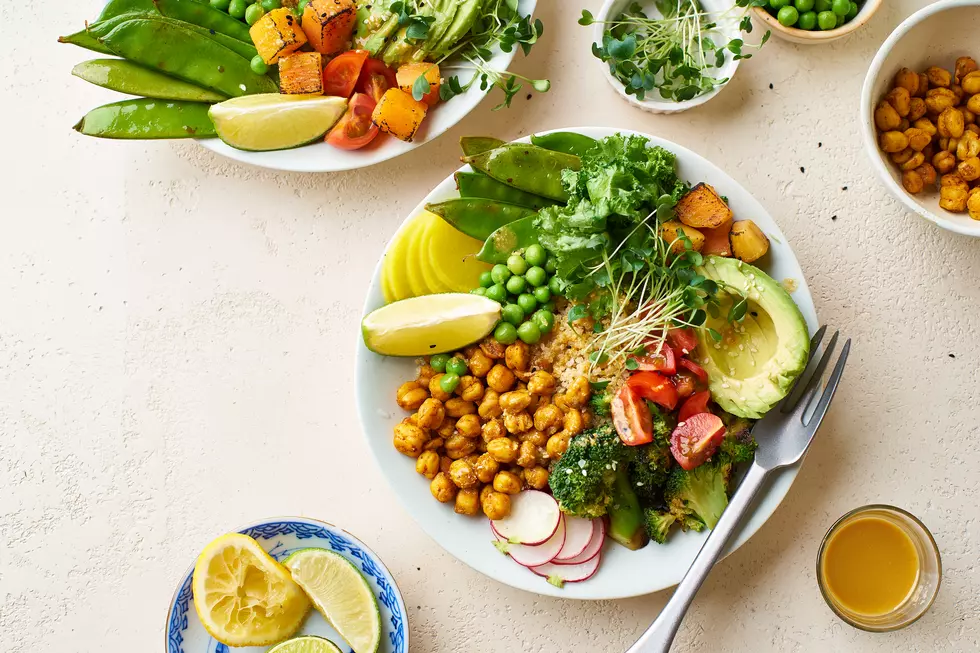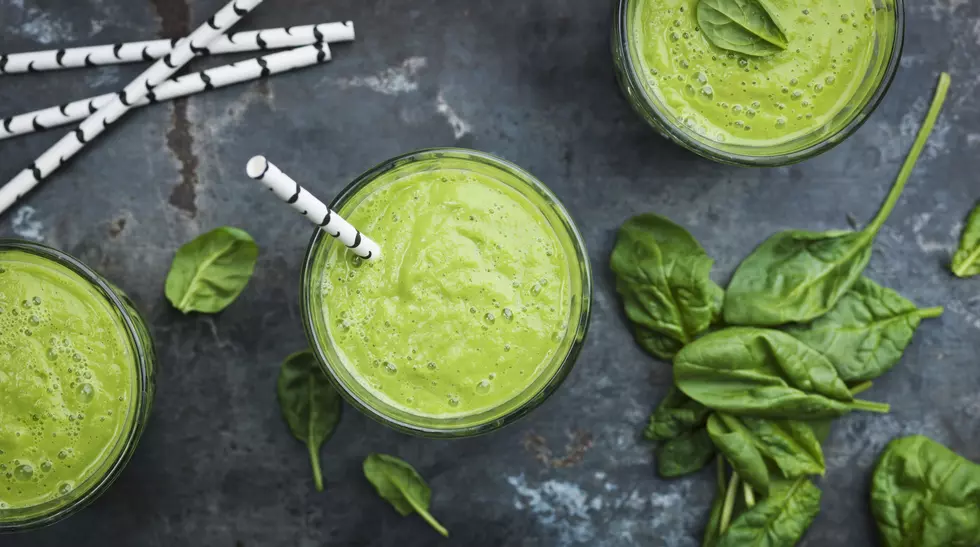
7 Easy Tips to Lose Weight in the Winter, According to the Experts
It’s cold. There's a foot of snow on the ground and all you want to do is stay inside and eat comfort food. During the coldest months, we know how easy it is to make an excuse to skip working out or fall off the healthy eating bandwagon. Especially now—amidst a global pandemic—when anxiety levels are through the roof, it can be tough to commit to healthy living. With two-thirds of the country under snow and cold weather, going outside for a run seems rather impossible.
That’s why we tapped plant-based fitness and nutrition pros for their seven best tips to help you stay fit and lose weight now, to get a jump on your spring fitness season. Think of it as spring training. Pitchers and catchers reported for early workouts this week. You can too.
1. Schedule your home workouts ahead of time
Joshua Lafond, a NASM personal trainer and founder and editor at healthygymhabits.com has found this technique especially helpful as of late to keep his home workouts on track. (He’s also found since going vegan a few years back that his energy and enthusiasm for working with clients has skyrocketed.) “When I’m stuck at home, the days often seem like they blend together. Days can turn into weeks, then boredom starts to set in which is usually a real motivation killer,” he says, reminding us all of a feeling we’re all too familiar with by now.
“I’ve found scheduling my workouts for the upcoming week every Sunday night has been a great way to hold myself accountable. By doing this you make your health a priority, and you’re more committed to having exercise become a routine,” he continues, noting that one study even tested this theory, finding that people who scored above average in “planning” actually went to the gym significantly more than the people who had no gym plan at all. “If this is the case, even if you plan to only work out a few times a week, anything is better than nothing!” he exclaims.
So whether you prefer to note the time of your workouts on a day planner, wall calendar, or digitally, be sure to mark it into your schedule just as you would any other obligations.
2. Embrace HIIT workouts.
We know, we know, without the physical cue of walking into the good old gym (how we miss ya!), working out can be a challenge. That’s why Lafond is a fan of high-intensity interval training (HIIT), which can be done in as little as 15 minutes and is easy to do at home. “Even without equipment, simple high-intensity interval training (HITT) workouts can have resounding results for weight loss. Researchers have found that HITT training burns on average 25-30% more calories per-minute when compared to other exercises like weight lifting, cycling, and even running,” he explains. “Another study also found that HITT workouts are especially good at burning belly fat.”
Only got five minutes? Try this HIIT quickie by vegan fitness guru Caroline Deisler.
3. Make soups and stews your friend
“Following a whole-food, plant-based diet void of sugar and oil has allowed me to lose weight and maintain my weight loss,” shares nutritionist Trista Best, MPH, RD, of Balance One Supplements. “This has been convenient during cold winter months as I can utilize soups and stews for the majority of my meals and eliminate oil by using vegetable broth.”
Hearty winter vegetable stew, coming right up.
4. Load up on winter vegetables
Speaking of that winter stew, it’s important to incorporate vegetables into your diet during these chilly months. Allison Gregg, RDN, LD/N registered dietitian, a vegan, and a nutritional consultant for MomLovesBest says she always tries to build her plates with 50% vegetables. “This helps control the calorie content as vegetables are low in calories. It also helps with satiety at the end of the meal as vegetables are high in fiber,” she says. Her personal faves? Kale, Brussels sprouts, carrots, parsnips, and red cabbage. This Kale Salad With Roasted Cauliflower and Spiced Rice sure has piqued our interest.
5. Sip on ginger tea
Who knew ginger could be such a potent weight-loss elixir? “Opting for ginger tea over coffee or other flavored teas that offer no benefits is a great way to get in antioxidants and boost your overall health. It is an easy addition to your current health regimen and daily routine, without losing the flavor and warmth of other hot beverages you'd be enjoying otherwise,” says Best, citing this study on ginger intake on weight loss.
“Ginger is unique to weight loss in that it contains compounds known as gingerols and shogaols. These compounds create an antioxidant effect in the body that reduces free radical damage in the body,” she adds. Try our favorite DIY ginger and hot water recipe here.
6. Log those strength training sessions
“Strength training is a great way to lose weight. It is also a fantastic way to burn fat and build muscle. An increased metabolic rate will lead to more calories being burned throughout the day. Larger muscles help to increase your metabolic rate as well as the number of calories that you burn during your workouts and at rest,” says Desi Johnson II, NASM, CPT, CNC, at Kemtai, the digital home fitness company, offering examples of using your body weight, dumbbells, resistance bands, and kettlebells.
“Studies have shown that you burn more calories in the hours following a weight training session, compared to cardio,” he says. “There are reports of resting metabolism staying elevated up to 38 hours after weight training. This increased calorie burn can lead to additional weight loss with strength training at home.”
If you’re looking to tone up, check out how to build muscle on a plant-based diet, from a vegan health coach and bodybuilder.
7. Add walnuts to your daily routine
Plant-forward nutritionist Kate McGowan, RD, often finds herself recommending walnuts since they have a natural combination of healthy fats, plant-based protein, and fiber, “three factors that can help promote satiety.” Elaborating, she adds that “eating them can help curb your hunger and help you avoid overeating when that 3 p.m. snack hour comes around. A study published in Nutrition showed that healthy adults (ages 18-35) who regularly consumed foods containing polyunsaturated fats (fats found in walnuts) experienced favorable changes with satiety.”
More From The Beet









